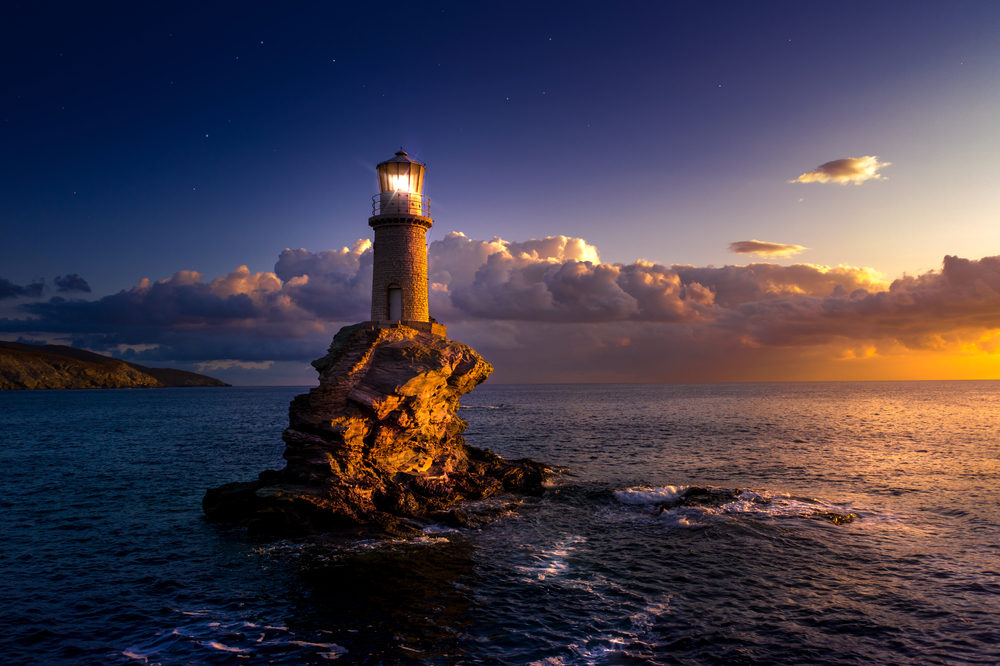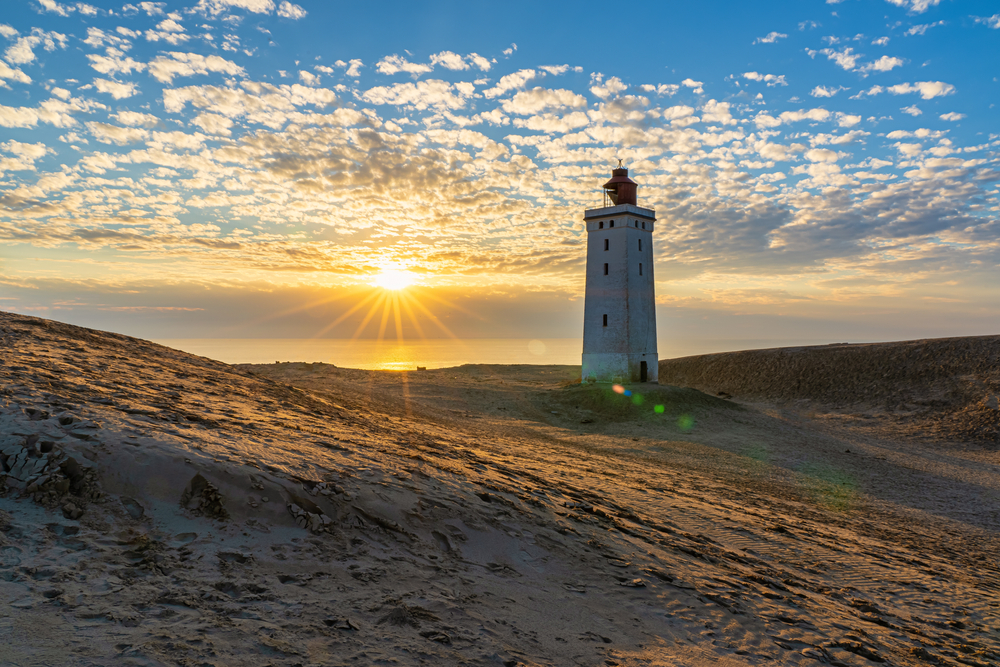
Discover the magic of the world's most emblematic lighthouses with our selection of the most beautiful jewels of the sea
Les éclaireurs lighthouse in Argentina
The Pathfinders Lighthouse, also known as the Lighthouse at the End of the World, is located on Pathfinders Island off the coast of Argentina, near Ushuaia in Tierra del Fuego.
Built in 1919, this iconic lighthouse has become a symbol of navigation in southern Argentina.
Contrary to popular legend, the Pathfinders Lighthouse is not the lighthouse described in the famous novel ‘The Lighthouse at the End of the World’ by Jules Verne, but it is often associated with the story because of its proximity to the city of Ushuaia, considered to be the southernmost city in the world.


The Tower of Hercules in Spain
The Tower of Hercules, located in A Coruña, Spain, is one of the oldest and most famous lighthouses in the world, with a rich history dating back to antiquity.
Built in the 1st century AD during the Roman era, the Tower of Hercules is a testament to the engineering and architecture of the time.
Legend has it that the tower was built by Hercules himself after he defeated the giant Gerión and buried his head underneath where the tower now stands. The lighthouse was later used as a landmark for ships navigating the treacherous waters of the Gulf of Artabre.
The Creac'h lighthouse in France
The Créac’h lighthouse, located on the island of Ushant in France, is one of the most emblematic and powerful lighthouses in the world. Construction began in 1861 during the reign of Napoleon III and was completed in 1863.
The lighthouse was designed by French engineer Léonce Reynaud, who incorporated the latest technological innovations to make it an important maritime landmark in the region.
The Créac’h lighthouse is famous for its light, which is one of the most powerful in the world and can be seen up to 60 kilometres out to sea. It is also equipped with Fresnel lenses, a revolutionary technology at the time, which amplify the light and make it more visible to ships.


Pemaquid Point lighthouse, United States
Pemaquid Point Lighthouse, on the rocky coast of Maine in the United States, is steeped in history and maritime legend. Built in 1827 to guide ships through the rough waters of the Gulf of Maine, it marks the entrance to Muscongus Bay.
Over the years, Pemaquid Point Lighthouse has become an iconic landmark in the region, thanks to its picturesque architecture and spectacular location on a rocky outcrop. It was rebuilt in 1835 after storm damage, and a fourth-order Fresnel lantern was installed in 1857 to improve its visibility.
Pemaquid Point Lighthouse has played an important role in the region’s maritime history, guiding merchant ships and fishermen through the treacherous waters of the Maine coast. It has also become a cultural icon, appearing on stamps, coins and postcards, and in numerous works of art.
Tranøy lighthouse, Norway
Tranøy Lighthouse, located on the island of Hamarøy in the county of Nordland in Norway, is an iconic lighthouse steeped in history.
Built in 1864, the lighthouse was erected to guide ships through the treacherous waters of the Vestfjord, an inlet between the Lofoten Islands and the Norwegian coast.
With its picturesque architecture and spectacular location on Norway’s northern coast, Tranøy Lighthouse continues to captivate visitors and offer a fascinating insight into the maritime life of the region.


The Vizhinjam lighthouse in India
The Vizhinjam Lighthouse, located near the city of Thiruvananthapuram in the Indian state of Kerala, is an important maritime landmark steeped in history.
Built in 1972, this modern lighthouse was erected to guide ships through the often turbulent waters of the Arabian Sea, providing a vital aid to navigation in the region.
In addition to its utilitarian function, the Vizhinjam Lighthouse has become a symbol of Kerala’s coastal beauty. It attracts visitors with its elegant architecture and picturesque location, offering breathtaking views of the sparkling waters of the Arabian Sea and the golden sandy beaches that line the coast.
Lindau lighthouse, Germany
Lindau Lighthouse, located on the island of Lindau in Germany, has a fascinating history dating back to the early 19th century.
Built between 1853 and 1856, the lighthouse is an iconic symbol of the town of Lindau, located on the shores of Lake Constance, Germany’s largest lake.
Lindau Lighthouse was designed in a picturesque neo-Gothic style by Bavarian architect Joseph Daniel Ohlmüller. Its 33 metre high tower is decorated with ornamental motifs and topped by a lantern that emits a distinctive light to guide ships on the lake.


Rubjerg Knude Fyr lighthouse, Denmark
Rubjerg Knude Fyr lighthouse, on the north-west coast of Jutland in Denmark, is an iconic lighthouse steeped in history and tragedy. Built in 1900, the lighthouse stands on a steep sand dune some 60 metres above sea level.
In 1968, Rubjerg Knude Fyr Lighthouse was closed to the public due to the increasing risk of collapse. Despite several attempts to stabilise the dune and protect the lighthouse, continued erosion led to its final abandonment in 2002.
Today, Rubjerg Knude Fyr Lighthouse is a popular tourist attraction, attracting visitors from all over the world to admire its picturesque beauty and fascinating history.
Tourlitis lighthouse, Greece
The Tourlitis Lighthouse on the island of Andros in Greece is one of the most picturesque and unique lighthouses in the world. Built in the 19th century, the lighthouse stands on a steep cliff off the coast of Chora, the island’s capital.
What makes the Tourlitis lighthouse so remarkable is its unique location on an isolated rock. To reach the lighthouse, visitors must follow a winding path carved into the rock or use a spiral staircase, making it an unforgettable experience.
Interestingly, it is the first automated lighthouse in Greece, so it does not have a keeper.


Green Point lighthouse, South Africa
Built in 1824, this historic lighthouse is one of the oldest in South Africa and has played an important role in navigation along the South African coast.
Originally a modest structure, Green Point Lighthouse was extended and modernised in 1865 to meet the growing needs of maritime navigation. In 1926, a new Fresnel lens was installed to improve range and visibility, making it one of the most efficient lighthouses in the region.
Green Point Lighthouse is also associated with a number of historical events. During the Second World War, it was used as a lookout point to spot enemy ships. It was later automated in the 1960s, marking the end of the era of live lighthouse keepers.


